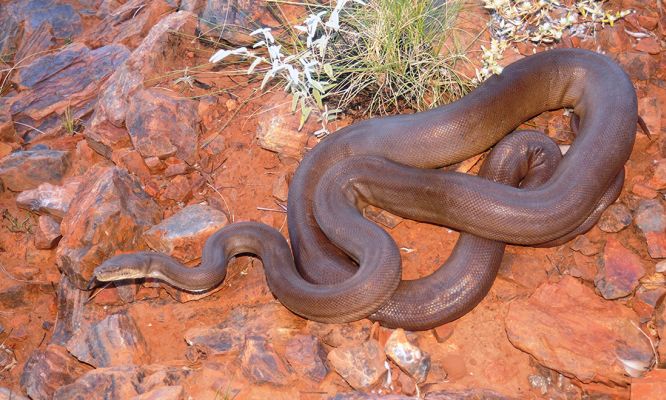SPECIES: Liasis olivaceus barroni — Olive Python (Pilbara subspecies)
CLASSIFICATION: Vulnerable
The Olive Python is Australia's second-largest snake; the largest being the Scrub Python. The species of Olive Python found up in the Pilbara in the north-west of WA is chocolate brown to olive green in colour, with a white or cream belly. They can grow to 4m, but on average, to around 2.5m long. As a Python, they are non-venomous. As a Python, they stalk out and asphyxiate their prey before consuming the body. Going one better, the Pilbara Olive Python - also an adept swimmer - can use the power of surprise when hunting, able to strike from a submerged position underneath the water. Creepy but effective.
It's difficult to say just how many Pilbara Olive Pythons are left in the wild. For one, they are nocturnal, they also camouflage magnificently and they don't tend to get out much. The Pilbara Olive Python prefers escarpments, gorges and waterholes across the ranges within the Pilbara region. They are usually found in close proximity to water and rock outcrops, where they will find prey. They prey on birds, mammals, reptiles or amphibians; from Rock Wallabies and Quolls to Fruit Bats and Ducks, and have also been known to polish off a Monitor Lizard and a Crocodile if it happens across their path.
Threats to the Pilbara Olive Python are its low reporduction rate, reduction in habitat, degradation of habitat due to mining and a decline in numbers of its prey, such as quolls and wallabies. They are also quite slow moving, and therefore vunlerable to road fatalaties. To the detriment of the Pilbara Olive Python, they can be mistaken for a venomous snake and killed.
Photo: David Pearson/DBCA

